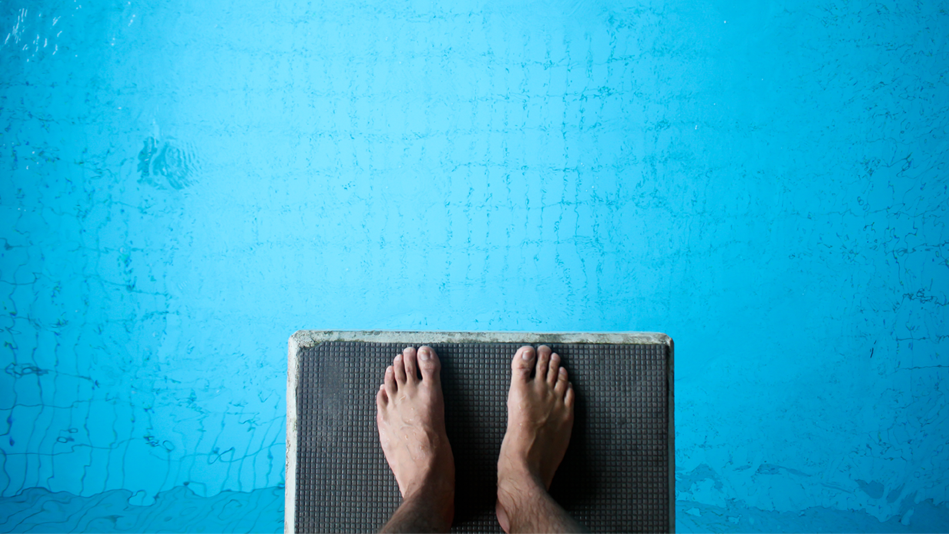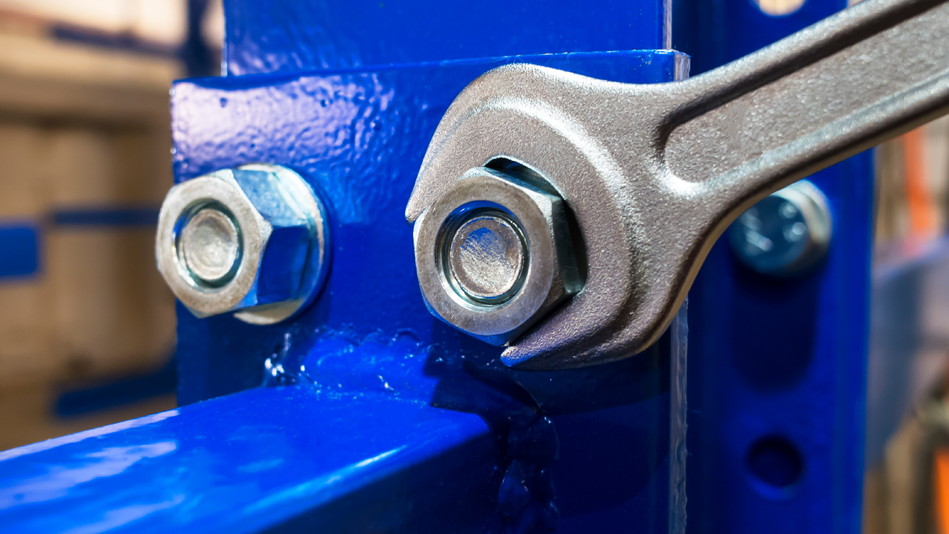While a diving board can add loads of fun to your swimming pool activities, it’s important to give your diving board a quick inspection every year before it gets used, to make your summer safer. After you’ve opened your pool, here are three things to check on your diving board to prepare for swimming season.
Inspect your diving board
It’s time to get hands-on, as you inspect the following:
Above
Run your hands all along the top of the diving board: The tread should feel rough from end to end, like sand. Any smooth spots present a dangerous slip hazard. If you find smooth spots, your local pool professional can help you determine whether you need to resurface the tread or replace the board.

Because algae growth can also be a slip hazard, you should hose your diving board off daily with fresh water to keep algae from forming on the surface.
Whenever algae does show up, simply scrub it with a soft bristle scrub brush and warm, soapy water, taking care to keep soapy water out of your swimming pool.
Below
Look underneath the board to check for any cracks (even hairline cracks). Cracking indicates damage to the inner core of the board, making it unsafe to use and time for a replacement.
Pro tip: A diving board has a useful life of approximately 7 to 10 years. If your diving board is more than 10 years old, you should probably replace it. You may be able to reuse the existing stand if your new diving board comes from the same manufacturer.
Paint
Chipped or peeling paint can lead to rust and sharp edges. If you find any, check with your pool professional for touchups and painting tips.
Balance & alignment
Is the board level? Before you climb on, use a level tool to verify that the diving board is level from side to side, as an unlevel board can lead to early wear and tear. The end of the board should be perfectly aligned with the stand as well; not more to one side or the other.

Examine all your hardware
You’ve probably noticed various bolts all around your diving board that secure the board, the stand, and any supporting railings or steps. Verify that no bolts are missing and be sure to tighten any that are loose. Also check for rust or damage, replacing any rusty bolts or screws as needed.
Check your board’s fulcrum pad
A fulcrum pad protects the underside of the board and is a common feature on most diving boards. If you have one, it may require lubrication on a regular basis—be sure to get familiar with any documentation included with your diving board, so you can make sure it’s always safe to use. When your fulcrum pad is showing signs of needing replacement, check with your local pool professional.
If everything else is in order, go make a splash!
Visit us on Facebook, LinkedIn, Twitter or Instagram to tell us your thoughts!
